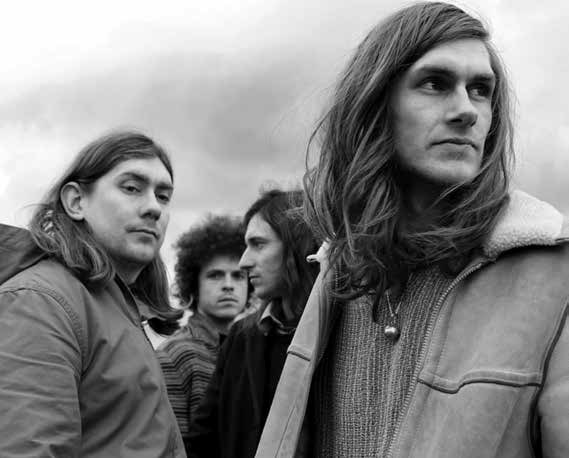Group at Work: Syd Arthur

Prog-rock ain’t what it used to be. These days, the genre has splintered into endless sub-genres like prog-metal, neo-prog and alt-prog, with few bands capturing that timeless and slightly indefinable spirit of prime-era King Crimson or Yes—bands who blended technical chops with unconventional instrumentation and colorful arrangements outside the pop purview. Enter Syd Arthur, an expansive new quartet from Canterbury, England—fittingly, the stomping grounds for one of the genre’s most pivotal movements in the ‘70s.
While the Syd Arthur sound is “heavily influenced” by that peak era of British prog, the band’s been working hard to expose their music to an American audience. “We get fairly good responses when we’re playing our music live,” says frontman Liam Magill. “All of the people involved in the band, and all the music industry people, they’ve all been getting really into it.”
Seconds into the band’s second album, Sound Mirror, you’re transported somewhere entirely new, roaming through fields of green grass and psychedelic mushrooms. Magill coaxes out a jazzy electric guitar riff over a fidgety 6/8 groove, cooing about a faraway “Garden Of Time,” and Raven Bush, the nephew of art-rock goddess Kate Bush, adds flickering bursts of distorted mandolin, leading to a massive squall of hallucinatory wah-wah and a reflective coda of strings. In under five minutes, they’ve created an impressive sonic universe, but the band—which also includes bassist Joel Magill and drummer Fred Rother—never stops exploring.
Like their debut, the recently re-released On An On, Sound Mirror was recorded in London at the band’s own Wicker Studios, which they built in 2009. While they spent more than a year recording and re-tooling their debut, this new LP was “a lot quicker,” as they faced a label deadline for the first time. But the results sound anything but rushed—full of warm engineering and a cohesive sequencing.
“We definitely consider it a piece of work,” says Magill. “We selected the tunes as we were going, and we didn’t end up with much more than what we have on the record. We didn’t track anything extra. We had a clear picture of that selection of tunes in our mind.”
For lack of a better description, the group has that missing, indefinable ingredient so many prog-heads have been searching for. Magill knows it, too, but he’s also unable to figure out a proper label.
“We’re just doing what we do,” he says. “I don’t know—doing it in our own Canterbury, Syd Arthur way.”



















